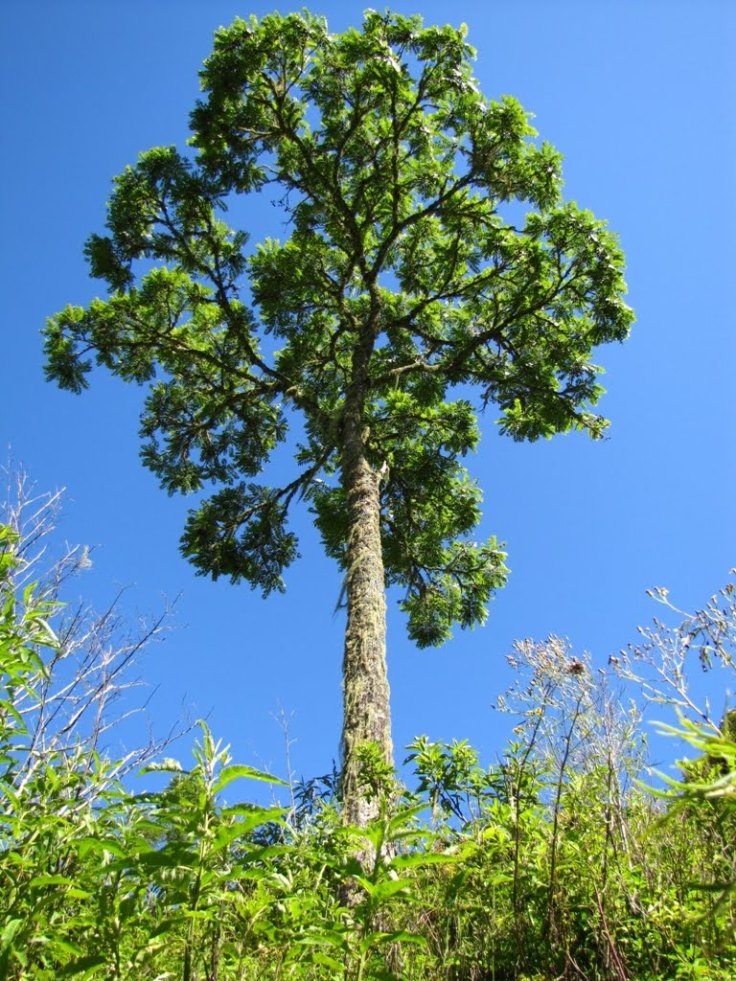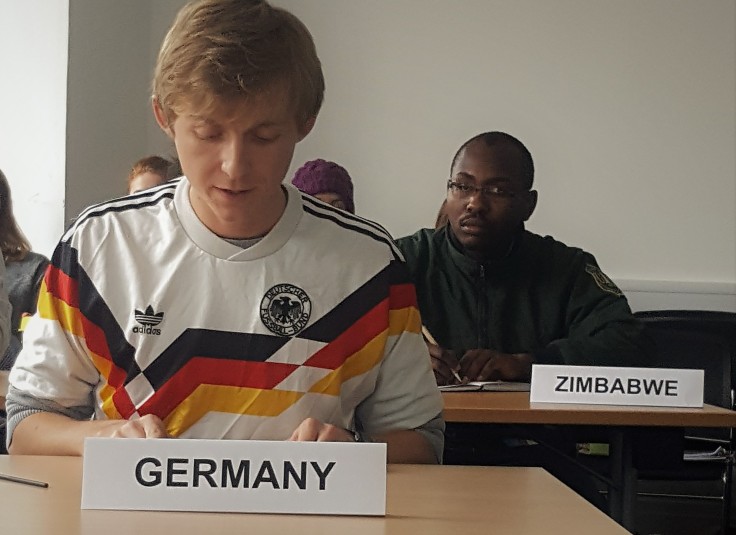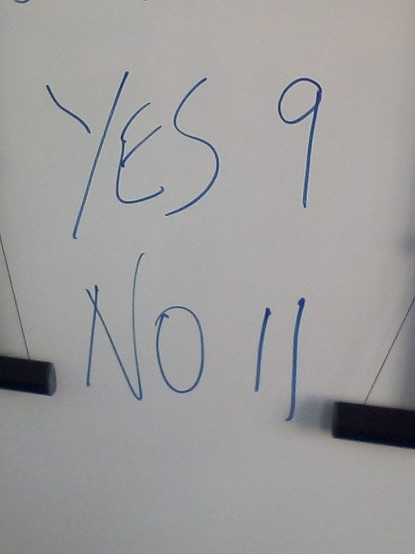In order for the overall goal of nature conservation to be achieved, a multi-faceted approach, which draws from an array of expertise and activities, should be applied. I think of the degradation of nature as a balloon that is expanding at a rapid rate, and conservationists as people who are pushing against this balloon in order to burst it, in the best case scenario, or deflate it, in the least. However, pushing against the balloon from only one side will only cause it to change shape or move, but applying the pressure from all of its facets is more likely to result in success. As such, professionals work towards conservation from various facets (ecology, economics, policy, technology, education etc.). However, my niche in contributing to the broader goal has largely been in environmental education. I came to study in a different environment from my previous one so that I could gain insights into other methods of carrying out this environmental education in my country. I was gratified to see this objective being fulfilled through a role-play exercise that was carried out on my course.
The role-play exercise was based on the Convention on International Trade in Endangered Species (CITES) Conference of Parties (CoP). It was led by Dr Paul Jepson, Course Director for the Master of Science degree in Biodiversity, Conservation and Management and Mr Noel McGough, Member of the CITES Plants Committee and former Head of the United Kingdom (UK) CITES Scientific Authority for Plants (1988 – 2014). Prior to this exercise, each student on the MSc course was assigned either a country (which was not necessarily their country of origin) or an observer organisation / lobbyist (conservation NGO or trade body) to represent. I represented Zimbabwe. The issue at hand was a proposal from Germany, on behalf of the European Union (EU), to list the tree species Cedrela odorata (cedar) onto CITES Appendix II due to its over-exploitation for timber.

The cedar has several uses such as furniture construction and the making of cigar boxes. Up-listing it would mean that in order for export of this tree to occur, the Scientific Authority of the exporting country would need to conduct a scientific survey whose results must prove that the export in question will not pose a threat to the species in the wild.
The Lead Up to CITES CoP Oxford – 3 November 2017
As, in practice, many of the negotiations are carried out before the actual meeting, there were interesting interactions that occurred between participants of the workshop. Two groups invested the most effort into these interactions. The first was the EU, led by Germany and the Netherlands, who was the chief proponents and had prepared the proposal respectively. The second were the observer organisations / lobbyists who, because they knew they were not permitted a vote to put forward on the day, desperately and relentlessly tried to convince participating states to adopt their position. The observer organisations / lobbyists mainly targeted the Non-Range states (countries in which the tree does not occur, such as the one I was representing) as there was a better chance to convince them given that they had less to gain directly from the ultimate outcome of the meeting compared to the EU and Range States. Both proponents and antagonists of the up-listing proposal approached me several times to inquire of my stance and convince me to vote in line with them. It was hilarious to see the mock dismay on the faces of the proponents and antagonists of the proposal each time I countered an argument with which they had tried to persuade me. But with this disappointment came a distinct determination to go and conduct further research, reflect on the issue again, and make a rebound. Verily, on that very same day or on the next at the latest, each proponent and antagonist would approach me again using a different angle of argument. Some “government delegates”, including myself, received emails from the exercise coordinators posing as the delegates’ foreign offices, advising them of what national interests they were to take into consideration when deciding on and casting their vote.
Settling on a vote was not an easy task for me, for two reasons. Firstly, the arguments that were being put up by both camps were nearly at par in strength. This simply reflected how determined, well-researched and eloquent both camps were. Secondly and more importantly, I had to act in a manner in which my country’s government would have, although I did not personally agree with any of the reasons for the stances it would possibly take, and this is a common real-life scenario. The Zimbabwe government would most likely have wanted to oppose the EU given that many of the government’s members were under EU financial sanctions. However, the fact that the EU supported Zimbabwe in the bid to prevent an ivory trade ban (an up-list onto Appendix I) at CoP 17, turned the tables such that Zimbabwe would thus want to vote in line with the EU to maintain this support, and continue to receive an income from ivory trade. I took the latter stance.
CITES CoP Oxford – 3 November 2017: The Day
On arriving at the Oxford University Centre for the Environment, I was greeted at the foot of the staircase by an official-looking sign post that indicated the meeting.

This gave the event an air of reality. On arriving in the room where the exercise was being held, I found the tables set up in official CITES format, with each group of parties sitting on a given table.
The Chair (Mr McGough) opened the meeting and sought confirmation from the Secretary (Dr Jepson) on whether credentials from all parties had been submitted. The Secretary, in response, announced outstanding credentials from three countries (without which none of them could vote), but these all trickled in slowly during the debates until seconds before the voting process. Germany was then given the floor to put forward the EU’s proposal which the German delegate conveyed very professionally.

The following was an array of well-presented arguments for and against the listing. I was very impressed with the mock seriousness of the Chair and the Secretary and the mock passion that the participants exhibited as they argued. As the meeting progressed, the Chair also sharply warned parties when they used informal language, spoke too fast for the (non-existent) translators to follow, exceeded the allocated speaking time or exhibited boisterous behaviour. Many of the delegates were dressed according to their roles, with some in wigs and fake moustaches and others in business attire (when they were representing business trade bodies). Various accents were flung about by speakers to give their speeches a representative flair.

Reflections and Discussion
I have not encountered much role-playing in natural resource teaching in Zimbabwe, yet several studies have demonstrated role plays to be highly effective methods of teaching, promoting group work and increasing students’ awareness of their own and others’ feelings (DeNeve and Heppner, 1997). They are also an effective research tool in the determination of the behaviour of communities under varying environmental protection regimes (Villamor and van Noordwijk, 2011). Role play exercises fall within the category of experiential learning. Several researchers namely Kolb (1974) cited in Healey and Jenkins (2000), Ajiboye and Silo (2008), Elsgest (1987) cited in Ajiboye and Atijoni (2008) found that experiential learning facilitated a better grasp of environmental concepts as compared to theoretical learning, and a higher likelihood of the application of the learnt concepts to practice. As such, their use in nature education in Zimbabwe should be up-scaled in order to harness their benefits.
References
Ajiboye, J.O., Ajitoni, S.O., 2008. Effects of full and quasi – participatory learning strategies on Nigerian senior secondary students’ environmental knowledge: Implications for classroom practice. Int. J. Environ. Sci. Educ. 3, 58–66.
Ajiboye, J.O., Silo, N., 2008. Enhancing Botswana Children’s Environmental Knowledge , Attitudes and Practices through the School Civic Clubs 3, 105–114.
DeNeve, K.M., and Heppner, M.J. 1997. Role Play Simulations: The Assessment of an Active Learning Technique and Comparisons with Traditional Lectures. Innovative Higher Education. 21, 231-246
Healey, M., Jenkins, A., 2000. Kolb’s experiential learning theory and its application in geography in higher education. J. Geog. 99, 185–195. https://doi.org/10.1080/00221340008978967
Villamor, G. B., and van Noordwijk, M. 2011. Social role-play games vs individual perceptions of conservation and PES agreements for maintaining rubber agroforests in Jambi (Sumatra), Indonesia. Ecology and Society 16(3): 27.
http://dx.doi.org/10.5751/ES-04339-160327


Leave a comment